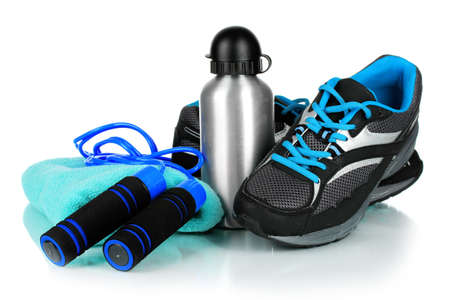1. Introduction to Adaptive Equipment and Assistive Technology
Living independently at home is important for people of all ages and abilities. For many Americans, adaptive equipment and assistive technology make it possible to safely manage daily tasks such as cooking, bathing, or getting dressed. These tools are designed to support individuals with physical, sensory, or cognitive challenges, helping them participate more fully in everyday life.
What Are Adaptive Equipment and Assistive Technology?
Adaptive equipment refers to devices or tools that are specially designed or modified to help people perform activities of daily living (ADLs) more easily and safely. Assistive technology is a broader term that includes not only physical devices but also software and apps that aid people with disabilities in communicating, learning, working, or managing their homes.
Key Definitions
| Term | Definition | Examples |
|---|---|---|
| Adaptive Equipment | Specially designed tools that help individuals perform specific tasks more easily. | Grab bars, shower chairs, reachers, adapted utensils |
| Assistive Technology | Any device, software, or equipment that helps people overcome challenges related to disability. | Voice-controlled smart home devices, screen readers, medication reminders |
The Importance of Independence at Home
The goal of adaptive equipment and assistive technology is to promote independence and improve quality of life. With the right supports in place, people can stay active in their communities, reduce reliance on caregivers, and enjoy greater confidence in their daily routines. In the U.S., these solutions are widely used by seniors wishing to age in place, veterans recovering from injuries, children with developmental delays, and adults managing chronic health conditions.
Main Benefits of Using Adaptive Equipment and Assistive Technology at Home
- Increased Safety: Reduces the risk of falls or accidents during everyday activities.
- Greater Independence: Allows people to do more for themselves without needing constant help.
- Enhanced Comfort: Makes tasks less physically demanding and more comfortable.
- Improved Mental Well-being: Boosts confidence and reduces feelings of dependence.
- Better Social Participation: Enables easier communication and engagement with others.
Who Can Benefit?
Adaptive equipment and assistive technology can be helpful for:
- Seniors experiencing changes in mobility or vision
- People recovering from surgery or injury
- Individuals with chronic illnesses like arthritis or multiple sclerosis
- Children with developmental disabilities or delays
- Anyone looking for ways to make their home environment safer and more accessible
This overview sets the stage for exploring how specific tools and technologies can support daily living skills at home. In the next sections, we’ll look at common types of adaptive equipment and real-life examples of how they make a difference in American households.
Mobility Supports for Home Independence
Enhancing Safety and Accessibility at Home
Maintaining independence at home often depends on having the right mobility supports. In the United States, many families use adaptive equipment to make daily activities safer and easier for individuals with mobility challenges. The right devices can help people move around their homes with confidence, reduce fall risks, and promote self-reliance.
Common Mobility Devices
The following table highlights some of the most widely used mobility aids in American households:
| Device | Main Use | Common Home Modifications |
|---|---|---|
| Walker | Provides stability for walking short distances indoors | Wider doorways, non-slip flooring, clear walkways |
| Wheelchair | Assists those who cannot walk or need to conserve energy | Ramps, lowered counters, roll-in showers, open floor plans |
| Transfer Bench | Makes getting in and out of the bathtub or shower safer and easier | Grab bars, handheld showerheads, slip-resistant mats |
| Ramp | Allows wheelchair or walker access over steps or thresholds | Permanently installed or portable ramps at entrances/exits |
Key Features to Consider
- Adjustability: Many devices are height-adjustable to fit individual needs.
- Non-slip materials: Rubber tips and textured surfaces reduce the risk of slipping.
- Lightweight frames: Aluminum or composite materials make devices easier to maneuver.
- User-friendly design: Foldable walkers and wheelchairs are convenient for storage and travel.
Cultural Considerations in U.S. Homes
American homes often require specific modifications to support mobility device use. Single-level living spaces, wider doorways (at least 32 inches), lever-style door handles, and open layouts are becoming more popular for accessibility. In bathrooms, grab bars near toilets and showers are standard recommendations by U.S. occupational therapists. Entryway ramps are sometimes custom-built or purchased as modular systems that can be installed quickly without major construction.
![]()
3. Self-Care and Activities of Daily Living (ADL) Aids
For many Americans, being able to independently take care of daily needs like dressing, bathing, grooming, and eating is essential for maintaining dignity and quality of life. Fortunately, a wide range of adaptive equipment and technology is available to help people manage these tasks safely and comfortably at home. Below are some practical solutions commonly found in American households:
Dressing Aids
Getting dressed can be challenging for people with limited mobility or dexterity. Adaptive tools make this process easier and safer.
| Aid | Description | Common Uses |
|---|---|---|
| Button Hook | A tool with a wire loop for pulling buttons through buttonholes. | Helps fasten shirts, pants, and jackets. |
| Sock Aid | A flexible device that holds a sock open so you can slide your foot in easily. | Makes putting on socks simple without bending over. |
| Long-Handled Shoe Horn | An extended shoe horn to help slide feet into shoes without bending. | Useful for those with back or hip issues. |
| Reacher/Grabber Tool | A lightweight stick with a trigger handle for grabbing clothing or other items out of reach. | Picks up clothes from the floor or high shelves. |
Bathing and Grooming Aids
Staying clean is important for health and comfort. Adaptive bathing aids provide support and reduce fall risks in the bathroom.
| Aid | Description | Common Uses |
|---|---|---|
| Shower Chair or Bath Bench | A sturdy seat placed inside the shower or tub for sitting while bathing. | Prevents slips and provides stability during showers. |
| Handheld Showerhead | A detachable showerhead that can be held in the hand or mounted lower on the wall. | Makes rinsing easier when seated; great for caregivers assisting others. |
| Long-Handled Sponges & Brushes | Bathing sponges or brushes with extended handles. | Reaches the back, feet, or legs without twisting or stretching. |
| Nonslip Bath Mats & Grab Bars | Mats with textured surfaces and bars installed on walls. | Add safety by preventing falls in wet areas. |
| Electric Toothbrushes & Easy-Grip Handles | Bigger, softer grips and powered brushing action. | Easier to hold and use for those with weak hands or arthritis. |
Eating and Kitchen Aids
Adaptive eating tools can make mealtimes more enjoyable and less frustrating. Many products are designed specifically to help individuals remain independent in the kitchen and at the table.
| Aid | Description | Common Uses |
|---|---|---|
| Built-Up Utensils (Easy-Grip Forks & Spoons) | Utensils with large, non-slip handles that are easy to grasp. | Ideal for people with arthritis or grip weakness. |
| Plate Guards & Scoop Dishes | Rims that attach to plates or dishes with one raised edge to help scoop food onto utensils. | Makes eating easier if using only one hand or limited coordination. |
| Cup Holders & Two-Handled Mugs | Cups designed for a firm grip, often with lids to prevent spills. | Eases drinking for those with tremors or weak grip strength. |
| Jar Openers & Electric Can Openers | Devices that aid in opening tight jars or cans automatically. | Simplifies food prep for those with limited hand strength. |
Smart Technology Integration in Daily Living Skills
The use of smart home devices is increasingly common in American homes. Voice-activated assistants like Amazon Alexa or Google Home allow users to set reminders for medication, adjust lighting, play music, or even call for help—all hands-free. Some smart pill dispensers send alerts when it’s time to take medication, adding another layer of support for daily routines. These technologies work alongside traditional adaptive equipment to create a safer, more accessible home environment for everyone.
4. Technology and Smart Home Integration
Technology is making daily life easier for everyone, especially for people with disabilities or limited mobility. Smart devices, voice-activated assistants, and home automation systems are transforming the way we live at home. These tools allow individuals to gain more independence and manage everyday tasks with less effort.
Smart Devices for Daily Living
Smart devices are gadgets that connect to the internet and can be controlled using a phone, tablet, or even your voice. Here are some examples of smart devices that support daily living:
| Device | Function | How It Helps |
|---|---|---|
| Smart Lights | Turn lights on/off or dim with voice or app | No need to reach switches; better safety at night |
| Smart Thermostats | Control heating/cooling remotely | Maintain comfortable temperature without getting up |
| Video Doorbells | See and talk to visitors from anywhere in the house | Increases security and reduces need to walk to door |
| Automated Blinds/Curtains | Open/close with remote or schedule automatically | Makes it easy to adjust lighting and privacy |
| Smart Plugs | Turn appliances on/off remotely or on schedule | Helps manage hard-to-reach devices safely |
Voice-Activated Assistants
Devices like Amazon Echo (Alexa), Google Nest (Google Assistant), and Apple HomePod (Siri) help control your home using simple voice commands. People can ask for weather updates, set reminders for medication, play music, make phone calls, or control other smart devices—without needing to use their hands.
Common Voice Commands for Accessibility:
- “Alexa, turn on the living room lights.”
- “Hey Google, set the thermostat to 72 degrees.”
- “Siri, remind me to take my medication at 8 PM.”
- “Alexa, lock the front door.”
- “Hey Google, call my daughter.”
Home Automation Systems
A complete home automation system connects multiple smart devices so they work together seamlessly. These systems can be customized based on individual needs. For example, someone with limited mobility could set up an evening routine where the lights dim, the blinds close, and the TV turns on—all with a single command or at a scheduled time.
Main Benefits of Home Automation:
- Independence: Manage your environment without needing help from others.
- Safety: Automated alerts for smoke detectors or water leaks can notify caregivers instantly.
- Simplicity: One app or device can control many parts of the home.
- Comfort: Personalized routines make daily activities more pleasant and manageable.
The integration of adaptive technology in American homes is helping more people live independently and comfortably. By exploring these options, individuals with disabilities can find solutions that fit their unique needs and lifestyles.
5. Community Resources and Funding Options
Finding the right adaptive equipment or technology for daily living can be life-changing, but it often comes with questions about where to get help and how to afford these supports. In the United States, there are many community resources and funding options available to help you access what you need at home. Here’s a simple guide to help you get started.
Occupational Therapy Services
Occupational therapists (OTs) are experts in recommending and teaching the use of adaptive equipment and technologies. You can access OT services through:
- Primary Care Physician Referrals: Ask your doctor for a referral to an occupational therapist.
- Home Health Agencies: Many agencies offer in-home OT assessments covered by insurance or Medicare/Medicaid if medically necessary.
- Outpatient Clinics: Local hospitals or rehabilitation centers often have OT departments.
Regional Loan Programs
If you need equipment but aren’t ready to purchase, try a loan program. These programs let you borrow adaptive devices and technology—sometimes even for free!
| Program Name | Description | Contact/Website |
|---|---|---|
| AT Act Programs | Every state has an Assistive Technology Act Program that loans devices and provides device demonstrations. | Find Your State AT Program |
| Lending Libraries | Local non-profits and some libraries lend items like communication boards, walkers, or kitchen aids. | Check local library websites or Easterseals |
| VA Equipment Loans | The Department of Veterans Affairs loans equipment to eligible veterans. | U.S. Department of Veterans Affairs |
Funding Options for Home Adaptations & Equipment
The cost of home modifications and adaptive technology can be high, but several funding sources may help:
Insurance Coverage
- Medicare: Covers certain durable medical equipment (DME) when prescribed by a doctor.
- Medicaid: State Medicaid programs may cover home modifications and DME, especially under waiver programs for people with disabilities.
- Private Insurance: Coverage varies by plan; always check with your provider.
Government and Nonprofit Grants
| Name/Program | Description/Who Qualifies? | How to Apply/Contact |
|---|---|---|
| Aging & Disability Resource Centers (ADRCs) | Seniors and people with disabilities—information on local grants and low-cost adaptations. | Eldercare Locator |
| Rebuilding Together | No-cost home modifications for low-income homeowners, especially seniors/veterans. | Rebuilding Together Website |
| Easterseals Grants & Services | Aids families and individuals in getting funding for assistive technology/adaptations. | Easterseals Website |
| The VA Specially Adapted Housing Grant (SAH) | Helps eligible veterans modify their homes for accessibility. | VA SAH Grant Info |
| Lions Clubs International Foundation/Local Chapters | Offers help with funding adaptive devices for vision or hearing impairments. | Lions Clubs Website |
Crowdfunding & Community Support Groups
- Crowdfunding Sites: Websites like GoFundMe can be used to raise funds for equipment or home modifications from friends, family, and the community.
- Local Support Groups: Many disability organizations have chapters that provide small grants or connect members to resources.
- Civic Organizations: Rotary Clubs, Knights of Columbus, or local churches sometimes offer assistance programs.
Navigating the Process: Simple Steps to Get Started
- Create a List: Write down what daily activities are challenging and what kind of adaptations might help.
- Talk to an Occupational Therapist: They can recommend specific equipment or modifications suited to your needs.
- Explore Funding Sources: Use the tables above as a starting point to research possible loan programs or grants in your area.
- Connect Locally: Reach out to your Area Agency on Aging, ADRC, or independent living center—they’re experts in local resources!
- Ask Questions: Don’t hesitate to ask providers about financial assistance options—they often know about programs you might not find online.
This approach makes it easier for anyone in the U.S. to find support for adaptive equipment and home technology—so you can keep living comfortably and independently at home!


